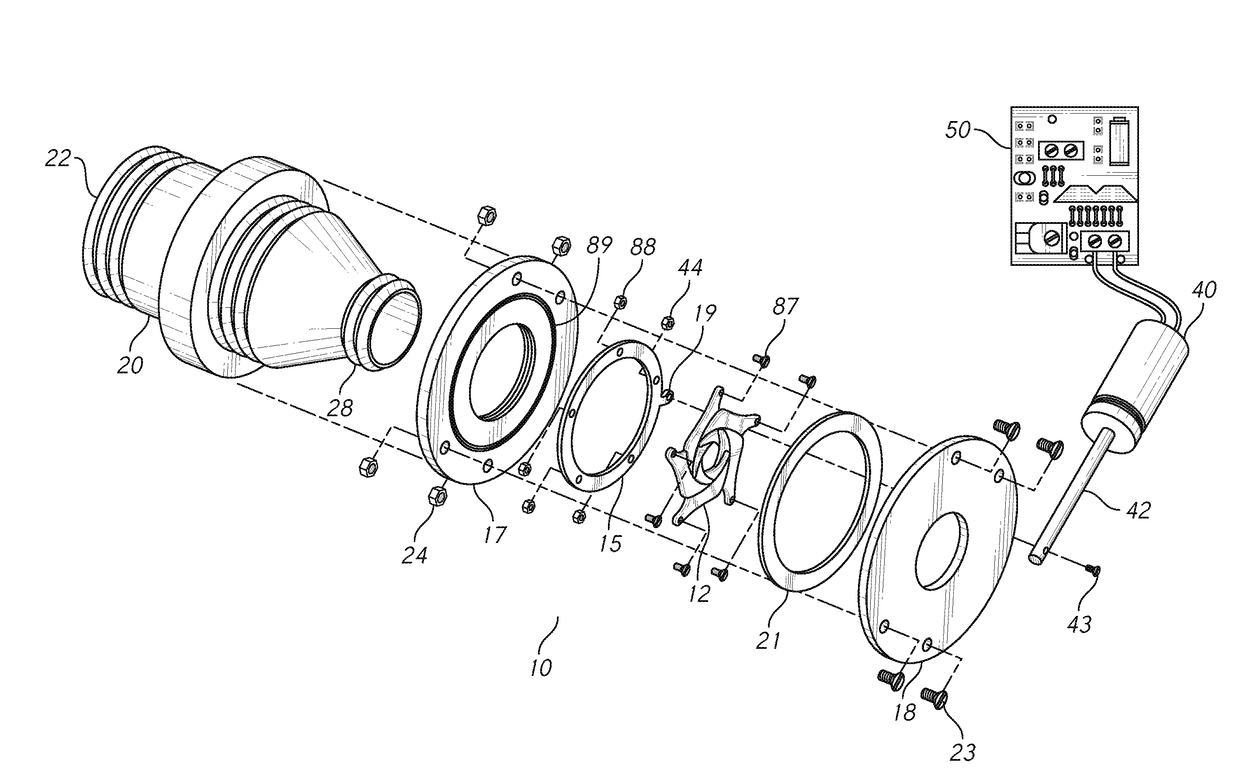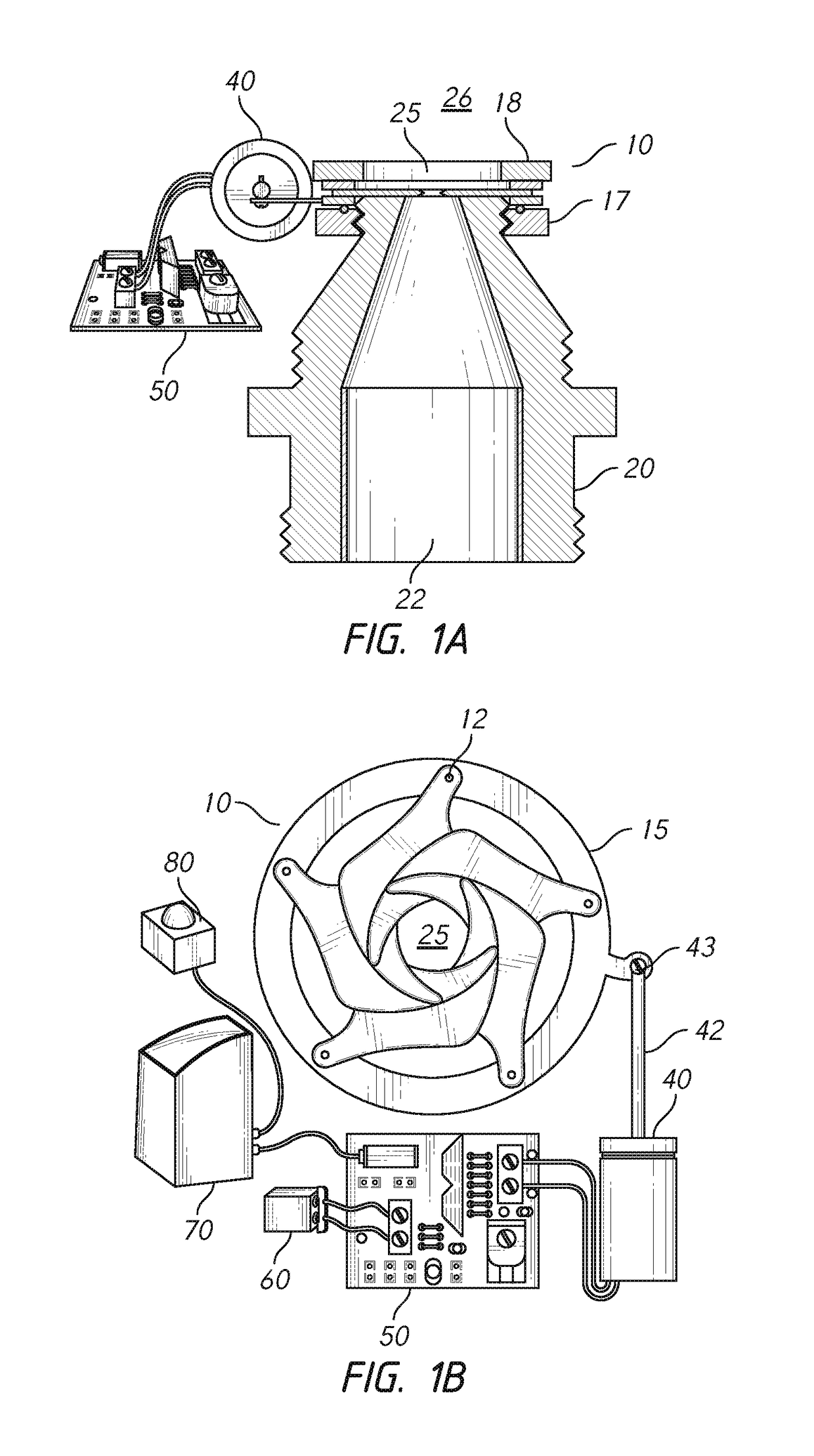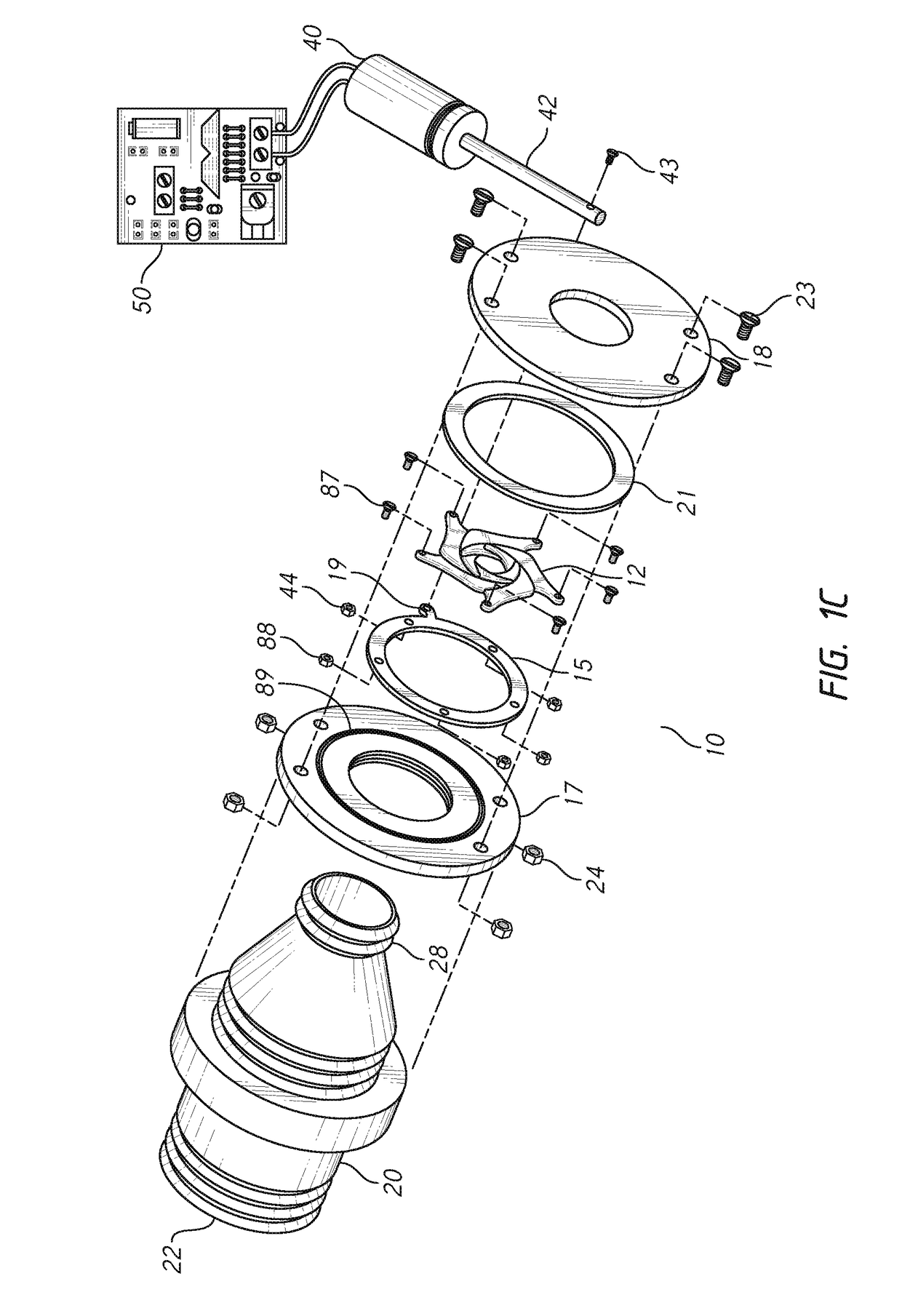Nozzle with automatic adjustable aperture
a technology of automatic adjustment and nozzle, applied in the direction of liquid fertiliser distribution, liquid fertiliser regulation system, agriculture, etc., can solve the problems of difficult to predict the actual location of fog, compare the intensity of fog, etc., to reduce the overall quantity and cost of salt treatment, accurate salt application, and increase the effect of adhesion
- Summary
- Abstract
- Description
- Claims
- Application Information
AI Technical Summary
Benefits of technology
Problems solved by technology
Method used
Image
Examples
Embodiment Construction
[0026]FIG. 1a shows an axial section of an adjusting diaphragm for a nozzle where the aperture can be changed according to a signal from a sensor. The adjusting diaphragm is indicated generally at [10]. As will be explained in detail, the adjusting diaphragm [10] controls the size of the aperture [25] for the nozzle [20] where fluid is dispersed. The adjusting diaphragm [10] is connected to a solenoid [40] and electrical control unit [50]. The adjusting diaphragm [10] is affixed to the nozzle [20] within a unit of retaining rings [17][18] that screw onto threads molded into the nozzle [20]. Preferably the diaphragm [10] and nozzle [20] are extruded plastic to provide a durable material impervious to water. Other materials could be molded to suit the chemical properties of other fluids, such as gasoline or ammonia. As identified in a study by Remy Bouet, “Ammonia: Large scale atmospheric tests,” page 105, an ammonia cloud dispersed through a jet tube “behaves like a heavy gas, and no...
PUM
 Login to View More
Login to View More Abstract
Description
Claims
Application Information
 Login to View More
Login to View More - R&D
- Intellectual Property
- Life Sciences
- Materials
- Tech Scout
- Unparalleled Data Quality
- Higher Quality Content
- 60% Fewer Hallucinations
Browse by: Latest US Patents, China's latest patents, Technical Efficacy Thesaurus, Application Domain, Technology Topic, Popular Technical Reports.
© 2025 PatSnap. All rights reserved.Legal|Privacy policy|Modern Slavery Act Transparency Statement|Sitemap|About US| Contact US: help@patsnap.com



